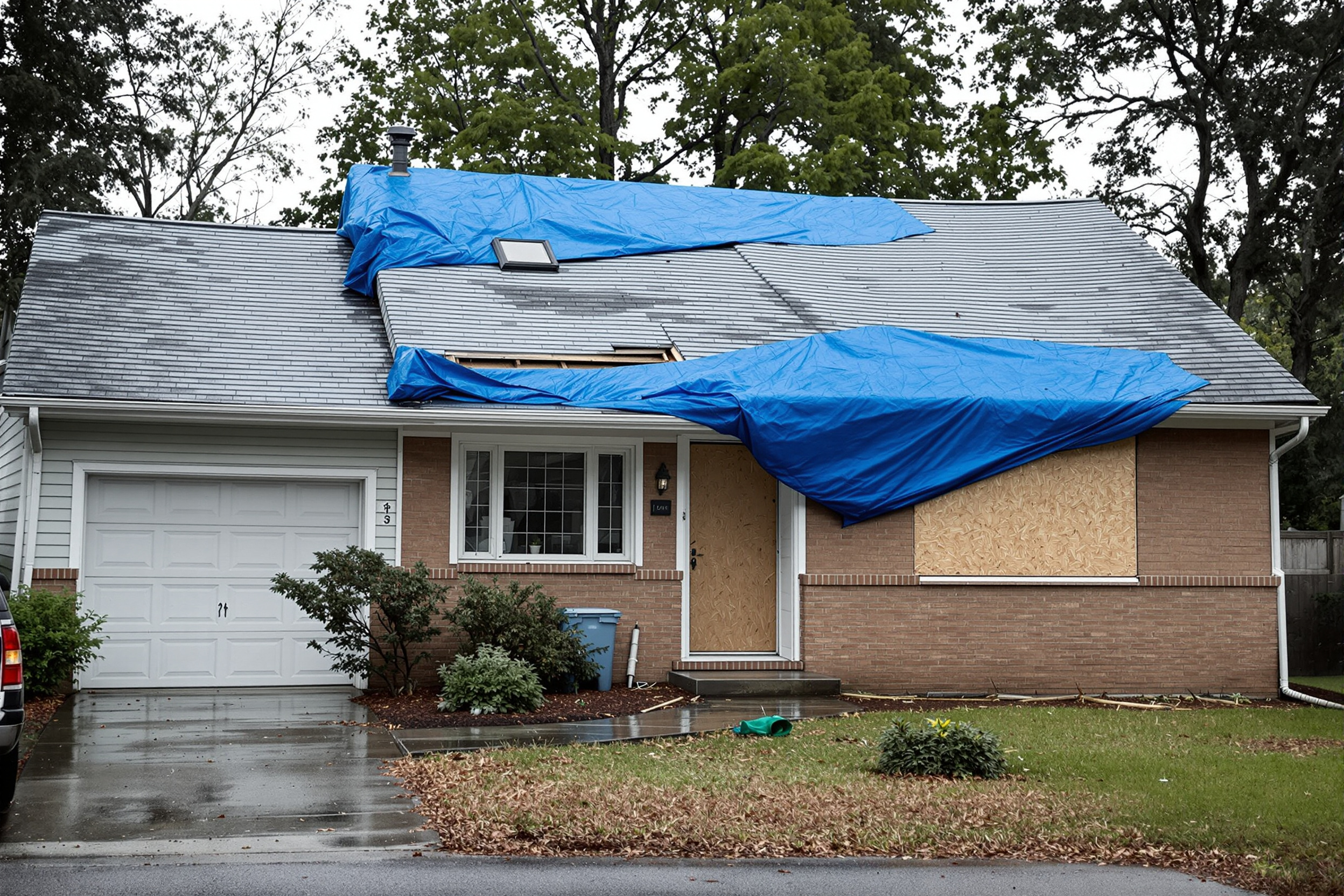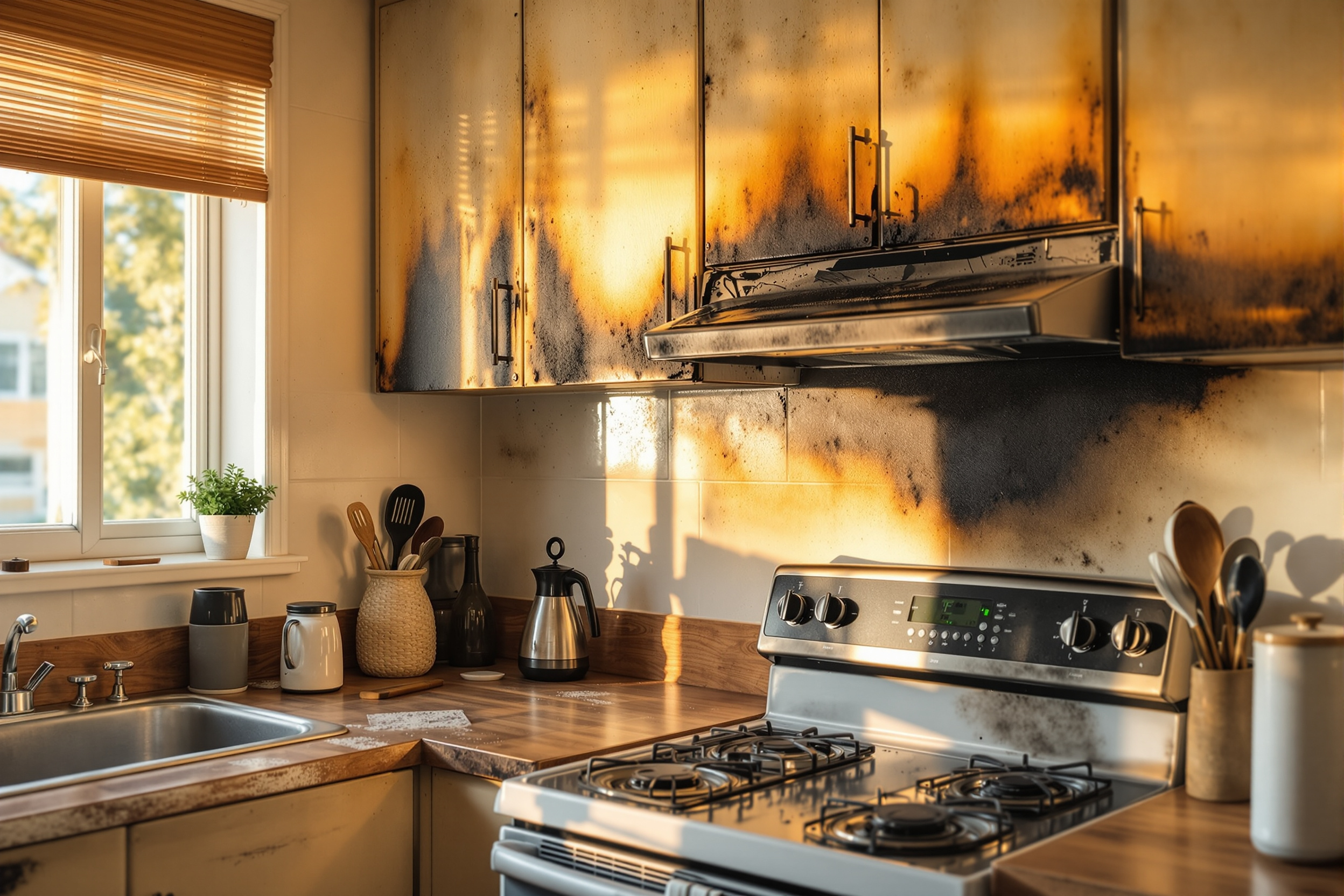Once you decide to rent out a home, you'll need different insurance. New landlords sometimes do not realize that existing homeowners insurance coverage for a primary residence may result in a claim being denied once the property is turned into a rental.
Keep reading to learn how much landlord insurance you need for a rental property. This article will discuss the main types of landlord insurance coverage, how landlord insurance differs from homeowners insurance, and the best places to find landlord insurance for rental property.
3 Types of Landlord Insurance Coverage
Landlord insurance provides an extra layer of protection when you own and operate rental property. While all landlord insurance policies are different, there are 3 main types of coverage to consider:
1. Property Insurance Coverage
Covers the physical structure of the rental home, including:
- The dwelling helps you to repair property damage from fire and natural causes on a rental home, apartment, or condo
- Personal property covers personal property in the rental house. This could include pieces of equipment and furniture, but it does not cover the renter's personal items (your tenant needs renters insurance for that)
- Other structures covers additional and detached structures within your rental property, like a free-standing garage or sheds
Although this coverage provides protection for damages to your rental property, including personal property used to service the home, it does not cover damages from normal equipment breakdown or maintenance costs.
It also does not apply to any shared property. If you live in the home and rent an extra room, it would be best to consult your insurance agent and see whether that rented space can be covered under your homeowners coverage. The property insurance coverage only applies to non-owner-occupied rental properties.
2. Liability Insurance Coverage
Liability coverage is critical when the tenant or a third party is injured on your property. For example, let's say the railings on the property were faulty, and someone fell and got injured. If you are found liable for damages, your liability coverage can pay for medical bills and legal costs up to your coverage limit.
3. Loss of Income Insurance Coverage
This coverage provides temporary rental income reimbursements should your property become uninhabitable. It could be fire, smoke, windstorm, water damage, broken water pipes, AC leak, a natural disaster, or other things beyond your control. However, the property needs to be occupied when it is declared uninhabitable for you to claim from the insurer.

How Much Landlord Insurance Do You Need?
The specific amount of landlord insurance coverage needed varies from property to property and from one investor to another.
In the worst-case scenario, you may wish to consider how much money it would take to rebuild your property after damage. Factors affecting a landlord insurance premium include the type of structure insured and the deductible amount.
Here are a couple of rules of thumb to follow when deciding how much landlord insurance you may need.
Tips for choosing the amount of property coverage
First, you need to estimate how much it would cost to replace the rental structure. Note that the keyword here is “structure.” That’s because a landlord insurance policy provides coverage for the structure or building and improvements, but not the land the property is sitting on.
For example, if the total value of your rental property is $300,000 and the land value is $50,000, you would need to insure the property for $250,000. An easy way to know how much the building alone is worth is to look at your tax records or a recent appraisal made when the property was purchased. The assessment will have the cost of the land separate from that of improvements (buildings).
That said, keep in mind that, unlike land, buildings depreciate, and the value on your tax records is not necessarily the correct representation of how much you would need for repairs. So instead, think about the present value and factor in inflation rates.
To illustrate, assume your property is worth $250,000 according to the most recent tax records. However, due to rapidly rising home values, your home's current fair market value is actually $325,000. Therefore, if a disaster strikes and your property needs to be entirely rebuilt, you would need $325,000 in coverage versus the amount listed by the county assessor’s office.
That's why it's crucial to work with a company that offers a variety of transparent insurance plans. Having too much coverage could be as bad as having too little because you’ll be paying higher premiums but will only receive payment for what it costs to rebuild your home if and when a claim is made.
Liability coverage and loss of rental income are harder to determine compared to property coverage, where it is easier to calculate the cost of construction materials.
For example, how much would it cost to mend a broken leg and pay legal fees if someone fell on your property? Or, how much rental income would be lost if your property was severely damaged and making the home habitable again took several months?
The amount of liability and loss of rental income coverage you may require depends on factors such as the extent of an injury and liability in the event of a lawsuit and how much capital you are holding in a reserve account for when there is no rental income coming in. As a rule of thumb, it is best to consider taking liability coverage that is high enough to cover serious injury lawsuits and fits within your financial ability.
Also, how many tenants or properties you have will significantly affect how much liability coverage you need. The more tenants there are, the more potential risk there is and the more coverage you will need. For instance, landlords with 1 to 4 units tend to take liability coverage worth $1,000,000. If you have more units, the chances of a lawsuit increase, meaning you need more coverage.
Difference Between Homeowners and Landlord Insurance
While both homeowners insurance and landlord insurance provide coverage for a home, they are used for different purposes.
A homeowner policy is used for a primary residence occupied by a homeowner. In some cases, coverage may also be available for a guest room rented out or short-term rental arrangements where you rent out the home when you are away on vacation.
On the other hand, landlord insurance is a policy that provides protection for property not occupied as a primary residence, such as a single-family rental home, townhome or condominium, or a short-term vacation rental.
Another difference between homeowner and landlord policies is the cost of coverage. As a rule of thumb, insurance for a rental property is about 25% more than a standard homeowners insurance policy.
However, landlord insurance premiums can vary quite a bit, typically from $800 to $3,000 per year for a 3 bed/2 bath single-family rental depending on the state, because every home is unique and every landlord has different coverage needs.
An excellent way to get a free instant quote online for landlord insurance is with Obie.
Obie offers instant insurance specifically designed for landlords and real estate investors. Landlord insurance is available through Obie for rental property in all 50 states, and investors have insured more than $4 billion in property to date.
Where to Find Landlord Insurance
There are several ways to find the best landlord insurance coverage for your property. These include:
Search Online
The internet never runs dry of information, including information on insurance matters. A simple online search will give you information about insurers like Obie, which offers landlord insurance.
You can request a landlord insurance quote and obtain simple, affordable, and transparent coverage entirely online. Best of all, there are no paper applications to deal with and no lengthy waits.
Simply answer a few property questions and get the right insurance and coverage for single-family rental property, multifamily buildings with 2-4 units, short-term rentals, and condominium units based on your specific needs.
Insurance Agent
Another option for finding landlord insurance is through your current insurance agent or broker. This may be the path of least resistance because you don't have to do much research or compare numerous quotes from multiple carriers by yourself.
However, while this may be the easiest option, it isn't necessarily the best way to find landlord insurance. Some companies compete on price by giving you minimal coverage and minimal customer service if and when a claim is filed.
Other Landlords
Do you know a friend or relative who has converted their residential home into a rental? Chances are they already have landlord insurance coverage. They can share their experiences with insurers and lessons learned and might even recommend coverage or an agent they have used.
Networking
Networking with other individuals in the real estate industry can be an excellent opportunity to find the best landlord insurance. Visit property expos and look for groups with other landlords on social media to join.
Final Thoughts
Landlord insurance is a must-have once your residential home becomes a rental. How much coverage you need, though, will depend on many factors.
How much would it take to rebuild your house if it was ravaged by fire? Or how much do you think it would cost in medical and legal fees if someone is severely injured on your property?
Knowing this can help you estimate how much landlord insurance you need. It is also best to get a professional insurance company to help you find a policy that doesn't leave you exposed.







